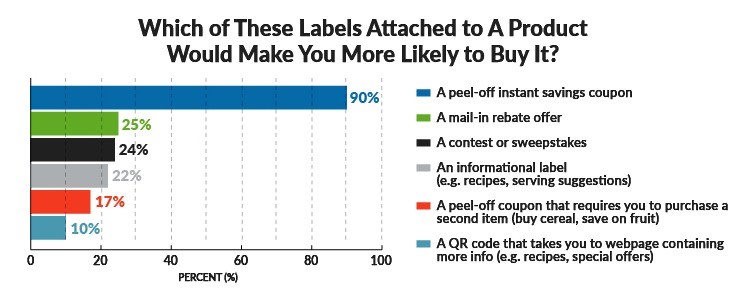The marketplace is more saturated than ever before, and as a result, businesses are under constant pressure to make an impact on the average consumer. Of course, you’ll need to ensure your product is of the highest quality, but you’ll have to convince a customer to buy it first. One of the best ways to do this is by getting a bit creative with your product packaging. An item’s packaging needs to protect it from damage and safeguard consumers in the process, but it also needs to communicate everything a shopper needs to know about your brand and the merchandise held within. Your packaging needs to grab a customer’s attention and entice them to learn more. Here are just a few highly effective tips to keep in mind when designing your product packaging that’ll appeal to the end customer. Now, granted, there are definite differences in the packaging requirements of e-commerce shoppers vs. in-store shoppers, but the overall principles still apply. Whether your packages are sold in-store or via your website (or both!), it’s critical to pay attention to the look of your packaging — especially if you are one of those many retailers who sell via multiple channels.
Use Colors, Fonts, and Graphics Thoughtfully
A lot of businesses are under the impression that they need to deliver a visual impact that rivals a slap to the face in order to get noticed. But the truth is that taking that kind of approach will probably backfire. Yes, your packaging does need to pack a bit of a punch, but it shouldn’t knock the wind out of a customer. Therefore, you need to be thoughtful when choosing your color scheme, typeface, and images.
Color plays a huge part in the shopping experience. The customer psyche (and their inclination to buy a product) can be significantly impacted just by the color scheme on your packaging. Research has found that approximately 85% of customers buy a particular product based on color alone. Moreover, 80% of brand recognition is driven by color. Therefore, you need to make an effort to associate your product packaging with your brand through well-chosen hues. Nearly every tone on the color wheel has its pros and cons; for example, blue is considered to be the most universally appealing color there is, but using it in your packaging could allow your product to get lost in the crowd. Aside from the psychological aspects, the colors you choose should reflect your message and brand, as well as the intended customer and the product itself. Make sure your chosen hues make it easy for a consumer to associate this item with your business as a whole and that these colors are consistent across your marketing platforms.
Just like color, your font shouldn’t be an afterthought. In fact, it’s your best resource for communicating vital information to your audience. Think of your font as your product and brand’s voice. First of all, it needs to be legible (i.e., not too small, too oversized, too bold, or too fancy to read). You should also limit your font choices to two at the most; otherwise, the words will overwhelm your packaging and customers will leave your product right there on the shelf. Lastly, your font choice(s) should relate back to your branding. It should appeal to your demographic and be consistent with your overall feel and message. Choosing a child-like font for a sophisticated product, for example, will be jarring and confusing to the consumer. Your typeface should make perfect sense for your company and the item itself.
Finally, don’t forget to use some kind of graphic in your packaging. You know what they say: a picture is worth a thousand words — and this is particularly true with packaging. Whether it’s a high-quality photo, your company logo, or another type of graphic that conveys the feel of your product, these images can catch the consumer’s eye and express ideas much more quickly than copy will. Images can help customers associate a certain product with your brand and instantly let them know what the product is or what it will provide for them. By using great images to communicate value and message, there’ll be a much greater chance that a shopper will pick up your product and decide to purchase it.

Provide Incentive, Facts, or Personal Connection
The design tips outlined above represent the essentials of effective packaging. But it will benefit you to think outside the box (sometimes even literally!) if you want to make an impact. Unique packaging shapes may be able to help you distinguish your product from all the others in a positive fashion, but be careful when going the unconventional route. Your products will still need to fit nicely on a shelf without being cumbersome to store clerks or customers. If you do go for something bold, make sure it’s not bulky or difficult to handle.
Often, some of the best techniques are somewhat more subtle. Some businesses choose to differentiate their brand by including inspiring quotes (like Dove’s chocolates), jokes (like the ones on popsicle sticks), or facts (like underneath Snapple’s bottle caps). While these are not included on the outside of the packaging, you could put a twist on this technique and turn it into a fun way to market your product.
Remember, buying any new product is a gamble. But you can put a customer’s mind at ease (or make it more financially worthwhile to take the leap) by adding certain features to the product’s packaging, like a peel-off label. A recent survey found that 59% of customers said peel-off labels attracted their attention to products on a shelf, beating out recognizable logos and attractive colors as the number one feature that caught their eye. These peel-off labels may contain coupons, recipes, or DIY ideas that utilize your product in some way. Because these labels literally stick out from the packaging, they’ll stick out in customers’ minds, too.
Keep in mind that just because this is your business doesn’t mean it can’t be personal. Actually, you should make every attempt to make a valuable, personal connection with your audience through your packaging. You can do this in many different ways. For example, you can tell a bit of your brand’s personal story (like Annie’s Homegrown and Clif Bar do on their boxes), run a campaign that reaches out to the customer (think about the “Share A Coke” campaign that offers personalized bottles), or encourage them to share and engage on social media with giveaways, hashtag features, and more. By showing a customer who your brand is and how they can connect with you, you’ll be positioning your brand as a potentially important part of a customer’s everyday life — and thus encouraging them to become a loyal consumer.
Remember: Your product packaging is your brand’s calling card. You need to ensure that the look and feel of your packaging is consistent with all of your other marketing, that it appeals to your target audience, and that is clearly expresses what the product is. But even more than that, you need to give consumers a reason to even look at your product and pick it up. Once you do that, you can utilize other tips listed here to make sure they’ll be hooked. By using color, font, graphics, and various types of incentives, you’ll be able to make a positive impact on the consumer and will be well on your way to making your brand a household name.
Tom Spina is the President of Luminer, an innovative label solutions company based in Lakewood, New Jersey.









